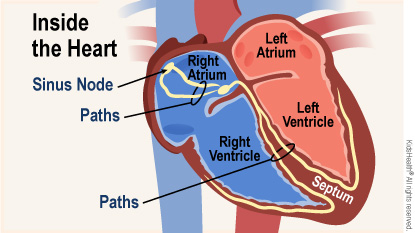Supraventricular tachycardia (SVT) is a very rapid heartbeat that usually is not life threatening. Some kids feel a fluttering in the chest or skipped heartbeats, but others have no symptoms.


SVT is a common abnormal heart rhythm (arrhythmia) in infants and children. It is a sudden burst of fast heartbeats that can be as fast as 220–280 beats per minute (bpm) in infants and 180–240 bpm in children and teens.
It can last anywhere from a few seconds to several days. Although most kids with SVT have structurally normal hearts, those with heart disease are at increased risk for SVT. Some causes of SVT can run in families.
Sometimes medication or other treatments are recommended for SVT if it returns often or lasts a while. Kids under age 1 are likely to outgrow SVT. When babies younger than 1 year old are started on a medication, it often can be stopped by their health care provider after 6–12 months. Some older kids can learn how to stop SVT when they feel their heart beating rapidly.
An electrocardiogram (EKG) helped health care providers determine what was causing the abnormal electrical activity in your child's heart. Your health care provider was able to stop the abnormal rhythm with special maneuvers or medications. Your child now has a normal heart rhythm and can be cared for at home.

If your child has an episode of SVT and you have been instructed by the health care provider to try to treat it at home:


Your child:

Your infant:
Your child:
If your child stops breathing, call 911 first, then start CPR (cardiopulmonary resuscitation), if you've been trained.